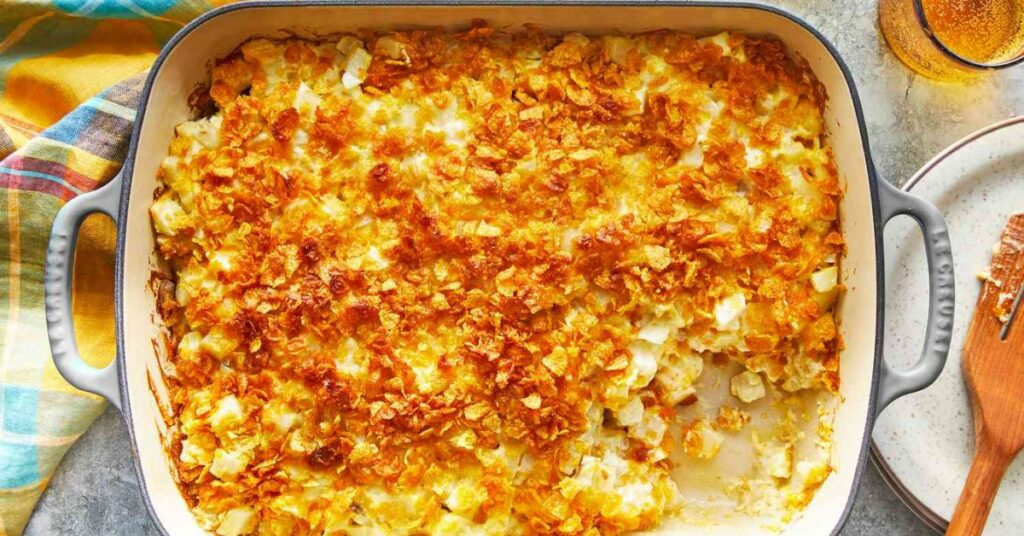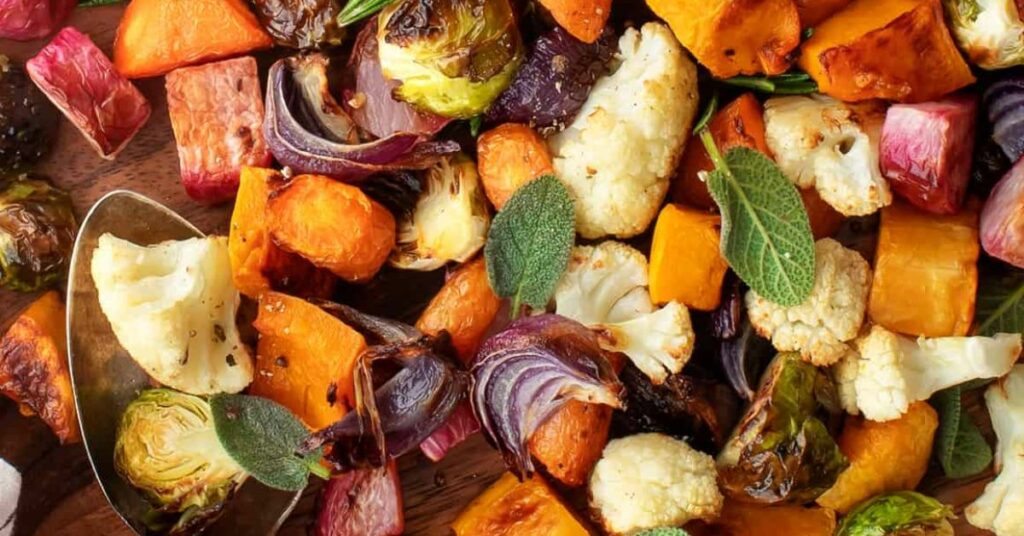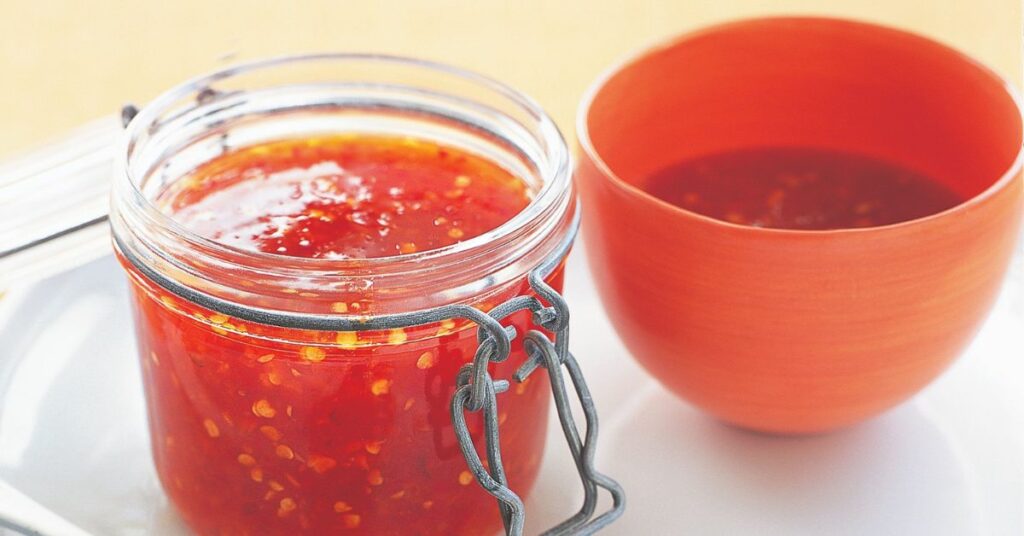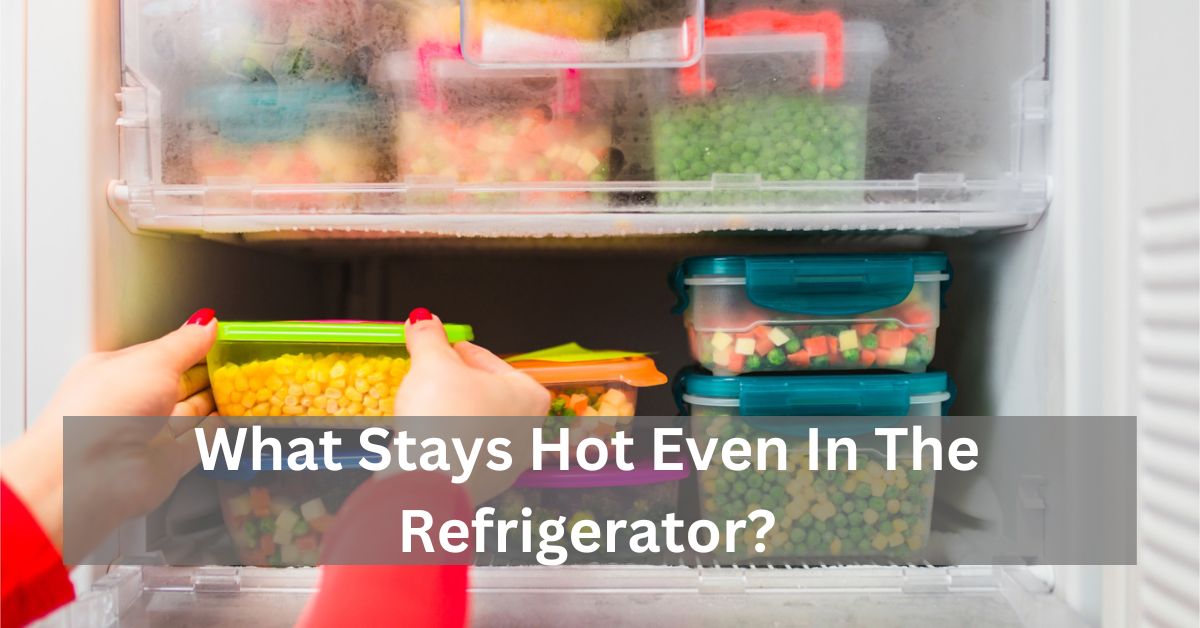The one question that comes to mind is, are most items even hot when placed in the refrigerator?
Yes, we are surrounded by even hotter things when placed in the refrigerator.
This delightful investigation unravels what keeps warm, or at least friendly, even in a frosty environment.
Stews and Soups:
A Cozy Cuddle in a Cold Refrigerator: a steaming bowl of good soup or stew overflowing with vegetables, delicate meat, and sweet-smelling flavors. Now, imagine finding that same bowl among the cool confines of the refrigerator, still glowing with warmth.
Soups and stews, with their rich stock and vigorous flavors, have an innate capacity to hold heat even in colder conditions. The secret is in their thermal mass and high water content, which act as insulators and keep them warm long after they are stored away.
So, make another batch of your favorite soup or stew, knowing you’ll always have a warm and nourishing meal when you’re hungry.
Casseroles:
The humble casserole—a favorite dish at potlucks, family get-togethers, and weeknight dinners—is baked goodness that resists chill. Casseroles are the epitome of comfort food, whether packed with layers of pasta, cheese, and sauce or a medley of vegetables and grains.

Moreover, despite their prepared starting points, these exquisite joys figure out how to hold their glow even in the refrigerator. Their dense composition and thermal conductivity, which enable them to retain their cozy appeal while retaining heat, make them so magical.
Therefore, you can rest assured that your reliable refrigerator will provide a warm and filling meal the next time you find yourself with casserole dinner leftovers.
Baked Goods and Bread:
A Toasty Surprise The aroma of freshly baked goods, from golden-brown muffins and bread to freshly baked loaves, wafting through the kitchen is undeniably reassuring.
Yet, what happens when you conceal these delicious treats in the refrigerator? Surprisingly, many breads and baked goods maintain their softness and warmth even in colder temperatures.
This peculiarity can be credited to the leftover intensity held inside the prepared merchandise and their low dampness content, which keeps them from turning out to be excessively solid or dry.
Therefore, the next time you need a warm slice of bread or flaky pastry, don’t be afraid to reach for that stash in the refrigerator. You never know; you might just be in for a toasty surprise.
Read More: How Long Are Refried Beans Good In The Refrigerator?
Veggies Roasted:
Nature’s Warmth, Preserved Roasted vegetables that are bursting with caramelized flavor, vibrant colors, and a warmth that is reassuring despite the cold environment in which they are placed. Even after being refrigerated, roasted vegetables can retain their warmth despite being cooked at a high temperature in the oven.

That is expected to some extent due to their thick construction and caramelization, which assist with catching intensity and keeping up with their temperature over the long haul.
Additionally, the natural sugars in many vegetables help them keep their heat, giving each savory bite a subtle sweetness.
Thus, whether prepared in a serving of mixed greens, heaped on a sandwich, or delighted in all alone, broiled vegetables are a delicious and consoling expansion to any dinner, hot or cold.
Spicy and sour condiments:
Adding Heat to Your Refrigerator Hot and spicy condiments add heat and flavor to your favorite dishes. But did you know that even in the frigid confines of the refrigerator, these fiery mixtures can still keep their heat?
Many hot sauces and spicy condiments have natural preservative properties that help prevent them from losing their warmth and flavor over time due to their high acidity and capsaicin content.

This compound gives chili peppers their heat. Therefore, hot sauces and spicy condiments are a surefire way to add a touch of warmth and excitement to any meal, whether drizzled over tacos, stirred into soups, or used as a marinade.
Read More: Will A New Refrigerator Trip GFCI?-Reasons And Solutions
More foods that should be kept in the refrigerator:
Some more foods and condiments are best kept in the refrigerator, even if you never have before. While they might be ok in a cupboard or on your kitchen counter, these everyday groceries will be tastier and last longer if you chill them.
• Mustard
• Horseradish
• Ketchup
• Maple syrup
• Soy sauce
• Nut flours
• Butter
• Organic nut butter
• Dairy-free milk
• Jam
• Cheese
• Fresh herbs
• Tortillas
• Cured meat
Read More: Can Refrigerators Get Wet?-Causes And Effects
Faqs:
1. What remains hot in the refrigerator?
Because of the energy it releases as its atoms decay into radioactive material, a lump of plutonium would continue to be hot.
2. Is it possible to store hot food directly in the refrigerator?
Directly in the refrigerator. The internal temperature of hot items can rise, compromising the safety of other perishable foods. Before refrigerating hot foods, allow them to cool to room temperature.
3. Why doesn’t pizza cool down when stored in the refrigerator?
Due to its density and the insulating qualities of the cheese and toppings, pizza frequently retains heat. The residual heat can make it feel warm even after refrigeration, even though the internal temperature may drop.
4. Is it possible to store hot liquids in the refrigerator?
Before being refrigerated to room temperature, setting boiling fluids straightforwardly in the refrigerator can raise the inner temperature, influencing different perishables.
5. Why does leftover curry seem warm in the refrigerator?
Curry’s intense flavors and aromatic compounds may create a perception of warmth. However, the actual temperature decreases during refrigeration.
Conclusion:
In conclusion, even though the refrigerator is often associated with keeping things cold, some culinary delights can withstand the cold while maintaining comfort, flavor, and warmth.
These unexpected treasures, which range from piping hot bowls of soup to golden-brown casseroles, freshly baked bread, roasted vegetables, and fiery hot sauces, give each bite a touch of coziness and delight.
Therefore, the next time you open the door to your refrigerator with a wave of warmth, don’t be surprised; instead, embrace it as a delectable reminder of the culinary wonders that lie within.




